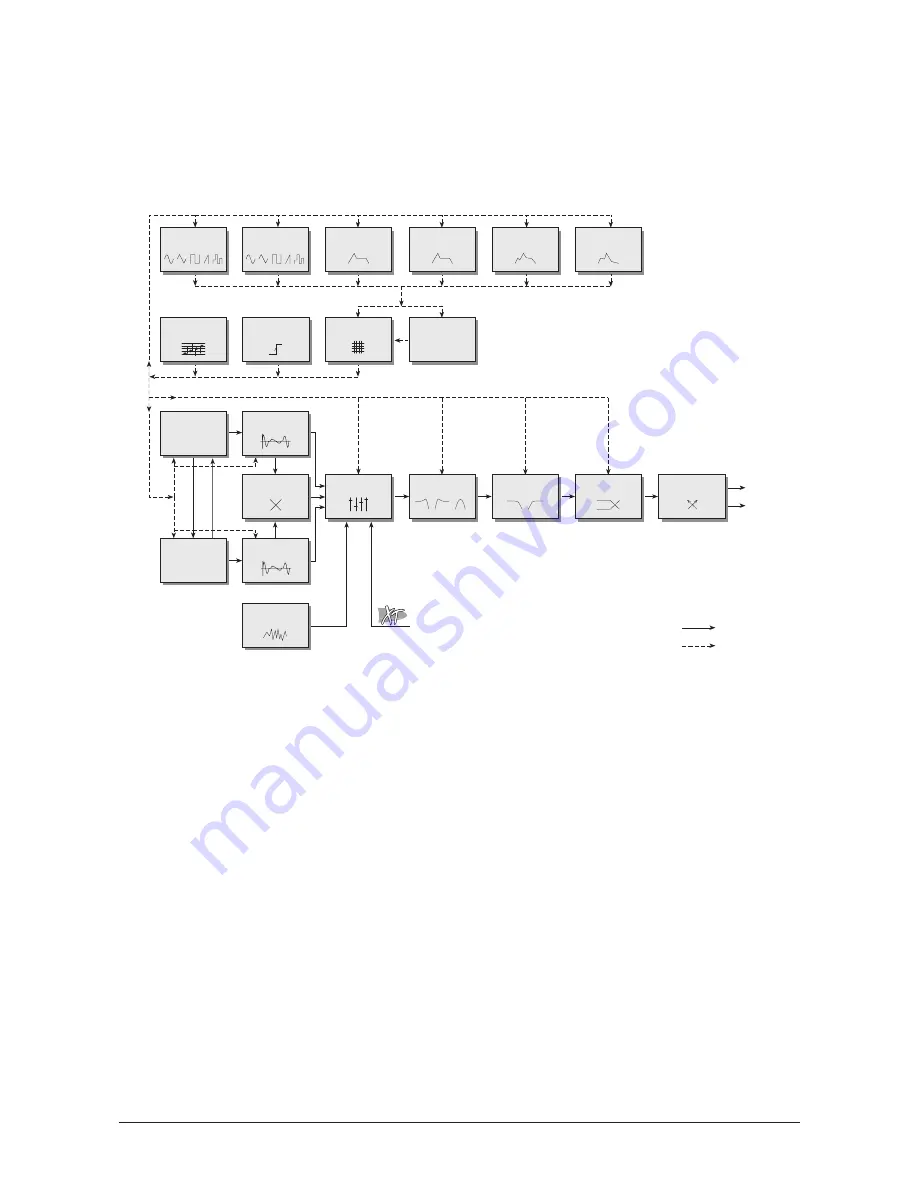
Sound Parameters
Overview of Functions
The Waldorf MicroWave II/XT/XTk consists of numerous sound-shaping components. The
following overview gives you an idea of how the individual components interact:
Diagram 3: Block schematic diagram for single sounds
As you can see, the MicroWave II/XT/XTk consists of two different types of components for
sound generation and sound shaping:
• Oscillators, Waves, Mixer, Filter, Amplifier:
Sound generation actually occurs within the Waves, which are driven by the
Oscillators. They produce a waveform according to the selected wavetable. The
Mixer follows the Waves in the signal chain, which is where the Waves’ output
signals are mixed. Pink noise can also be added to the mix. The Filter then shapes
the sound by amplifying (boosting) or attentuating (dampening) certain frequencies.
The Amplifier is located at the end of the signal chain. It determines the overall
volume and position of the signal within the stereo panorama.
• Modulators: LFOs, Envelopes, Modifiers, Modulation Matrix:
The Modulators are designed to manipulate or modulate the sound generating
components to add dynamics to sounds. The Low-frequency Oscillators (LFOs) are
designed for periodic or recurring waveshapes and Envelopes for modulations that
occur once within a given time frame. These generators are assigned to parameters
via the Modulation Matrix and influence these parameters to alter a sound. In
addition, the Modifier unit can process various mathematical operations and
functions on the modulation signals.
LFO 2
LFO 1
Filter Envelope
Amplifier
Envelope
Wave Envelope
Free Envelope
Modulation Matrix
Oscillator 1
Oscillator 2
Mixer
Filter 1
Amplifier
Output
R
L
Audio signal
Control signal
Ring Modulator
Noise Generator
Arpeggiator
Trigger
Filter 2
Modifiers
f(x,y)
Effects
Wave 2
Wave 1
External
Audio Signal
Sync
FM
38
User’s Manual MicroWave II • MicroWave XT • XTk






























